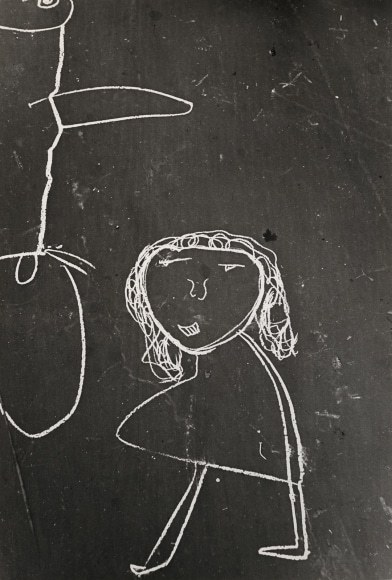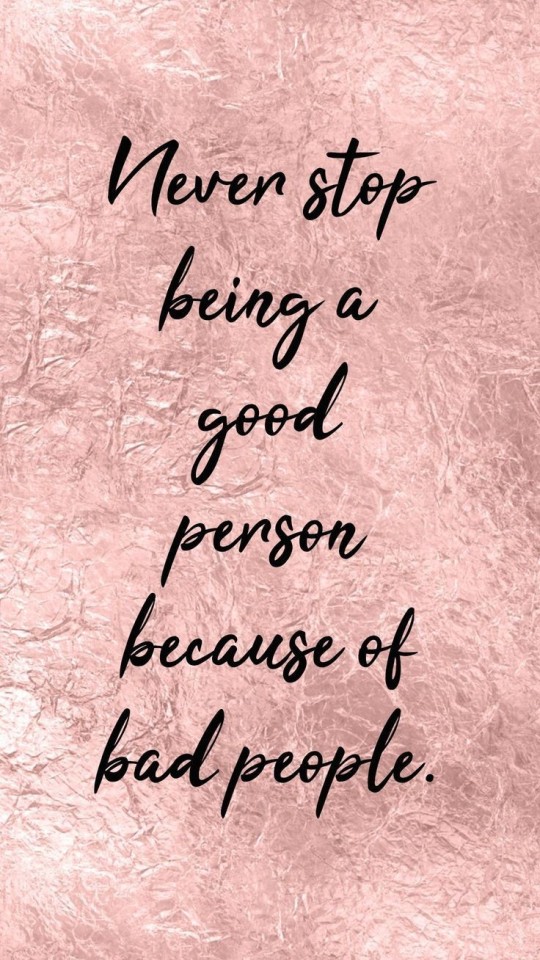Curate, connect, and discover
Blog Post - Blog Posts
Isamu Noguchi's rendering for a playground. I wrote about the educational philosophy behind these artful playgrounds in a post called "Fröbel’s Gifts, Noguchi’s Playgrounds" on Artfully Learning. Read it here: https://theartsandeducation.wordpress.com/2020/12/01/frobels-gifts-noguchis-playgrounds/


Harold Cohen coloring the forms produced AARON’s drawing Turtle at the Computer Museum, Boston, MA, ca. 1982. Collection of the Computer History Museum, 102627459. Is it possible to stop worrying and learn to coexist with AI? That's the question I begin to explore in the Artfully Learning post "Living and Learning with AI?" Read here: https://theartsandeducation.wordpress.com/2023/01/17/living-and-learning-with-ai/

Hamish Fulton, Seven Paces, 2003, cast iron installation. Photograph by Hans Weingartz, CC BY-SA 2.0 DE https://creativecommons.org/licenses/by-sa/2.0/de/deed.en, via Wikimedia Commons
I wrote about how we can walk with a purpose by expressing habits of mind that we learn through art. Read "How to walk like an Artist" on my blog, Artfully Learning: https://theartsandeducation.wordpress.com/2023/01/19/how-to-walk-like-an-artist/

Zoë Buckman, "Help I Work at the Ministry," c.1995, fabric and mixed media. Arts writer Priscilla Frank (2017) explains that, “when she was 10 years old, Buckman’s father got a job as a statistician at the Ministry of Defense in London. Imagining her father going to work at such an official building was humorous for her. Having overheard her parents speak of the long process of him receiving security clearance, she wanted to sew him a tie and entrap it in a glass frame.” . Read more about this artwork and others in my blog post "The Childhood Origins of Working Artists" Here's the link to my piece: https://theartsandeducation.wordpress.com/2023/01/13/the-childhood-origins-of-working-artists/


First image: Irving Kriesberg, (no title) drawing from the Chicago Field Museum of Natural History, c. 1929, graphite on paper. Collection of the Irving Kriesberg Estate Foundation. Second image: Irving Kriesberg, The Victim, 1994, oil on canvas. Collection of the Irving Kriesberg Estate Foundation.
Irving Kriesberg developed an aptitude for art at an early age by filling notebooks with drawings of museum taxidermy he encountered at Chicago’s Field Museum of Natural History. This early experience of biological rendering made a lasting impression on Kriesberg, who manifested his own animal imagery and phenomenal aesthetic environments throughout his career.
The untitled graphite drawing of a leopard seizing a bird in its claws is from around 1929, which would mean that Irving was about 10 years old when he drew it; the painting, titled The Victim, is from 1994, when Irving was 75. Both compositions feature a large cat pouncing on a bird.
It is amazing to see how interests, explorations and influences from childhood manifest creatively throughout the course of one's life. This is an apt insight into artistic development of a professional artist. Read more about this phenomenon in my latest blog post "The Childhood Origins of Working Artists."

Graphite drawing of a lady with a parasol, made by Paul Klee between ages 4 and 6. Image via Wikimedia Commons.
Read more about the childhood artwork of well known artists in my latest Artfully Learning post here.
Read my latest blog post on Helen Levitt called "Photographing Children’s Play and Art" on Artfully Learning: https://theartsandeducation.wordpress.com/2023/01/05/photographing-childrens-play-and-art/

Helen Levitt New York, c. 1942 Signed, titled N.Y. and dated CIRCA 1942 on verso
I wrote about Asawa's journey to become a renowned artist and art educator in a post titled "Weaving Art with Life." Read it now on Artfully Learning: https://theartsandeducation.wordpress.com/2022/11/15/weaving-art-with-life/
![Ruth Asawa Teaching Paper Folding, Ca. 1980s [© Estate Of Ruth Asawa]](https://64.media.tumblr.com/c6697e63db07e75713b9443a406a9541/2bbbef9b26c5b1e4-6d/s500x750/168a1e1b79e95e732420c4cb6bd78cd67fab00ba.png)
Ruth Asawa teaching paper folding, ca. 1980s [© Estate of Ruth Asawa]

An ancient Egyptian sherd with three children’s drawings. Source: the University of Tübingen’s Athribis-Project.
In an Artfully Learning post titled Artfully Ancient Learning, I analyzed an early 2022 archeological discovery of pottery fragments from Ptolemaic-era Egypt inscribed with a educational content including mathematical problems, grammar exercises and a variety of sketches and pictographs. The inscriptions are believed to be the work of students. Looking at the drawings in particular, I described how the figuration indicated a developmentally appropriate understanding of the ancient Egyptian canon, and how they correspond with contemporary understandings of artistic development. Read more here: https://theartsandeducation.wordpress.com/2022/02/10/artfully-ancient/

Angélique du Coudray’s La Machine was a groundbreaking obstetric phantom. Read about how this innovative soft sculpture inspired radical changes in medical education in the Artfully Learning post Abrégé de l’art des accouchements (The Art of Obstetrics)

Birch bark letter no. 202: spelling lessons and drawings by Onfim (aged 6 or 7), c.1240–1260. Source: Wikimedia commons
Find out more about this drawing in my Artfully Learning post: "Ancient Art Education"

Set and props from Jayson Musson: His History of Art at the Fabric Museum and Workshop, Philadelphia, PA. Photograph by Esther Welsh
I went to Philly to see "His History of Art" by Jayson Musson at the Fabric Workshop and Museum and wrote about its pedagogical use of satire to challenge art educational conventions on my blog Artfully Learning. Read about it in the post "Whose History of Art?"

Susan Leopold, Classroom, 2022, mixed media construction, digital print mounted on Plexiglas, electrical lighting, LED light bulb and wood, 18 x 12 x 10 inches. Courtesy of the artist and Elizabeth Harris Gallery.
Susan Leopold's series "School(s)" expresses the cultural and pedagogical zeitgeist of the past several years. You can read about her intimate sculptures of school interiors and their connection to the many facets of the educational environment in the Artfully Learning post "School(s)" ; and also listen to a conversation between Susan and I on the Artfully Learning Audio Series Episode 1: School(s).

Ant Farm, DOLON EMB 2 (drawing by Curtis Schreier), 1975. Hand colored brownline, 18 x 22 in. Courtesy of University of California, Berkeley Art Museum and Pacific Film Archive. Alt text: A colorful architectural rendering of an imaginary floating vessel.
"Although Dolphin Embassy was never realized beyond a blueprint, the enduring understandings are fascinating and serve as an educational model for future sustainable and relational architecture. With growing concerns regarding climate change and sea levels rising, there is a very real threat and high probability we will need to focus our efforts on building new habitats to address the displacement of both human and other animal species." Read more about the inter-species design of Dolphin Embassy in my latest Artfully Learning blog post "Architecture for All".

Jiro Yoshihara, Please Draw Freely, 1956. Paint and marker on wood. Installation view during the Outdoor Gutai Art Exhibition in Ashiya Park, Ashiya, 27 July – 4 August, 1956.
Yoshihara was a leading member of the Japanese avant-garde Gutai Group of visual artists, known for their physical and oft-confrontational artworks. A lesser discussed aspect of their legacy is their contributions to art education, which truly highlight the potency and potential of communal creativity. I wrote about the latter aspect on Artfully Learning in a post called "The Gutai Group: Play, Pedagogy and Possibility." Read it here: https://theartsandeducation.wordpress.com/2022/08/03/the-gutai-group-play-pedagogy-and-possibility/
I wrote about the empowering educational theories within Ej Hill's artwork on my blog, Artfully Learning. Read the post: https://theartsandeducation.wordpress.com/2021/06/09/artfully-assessing-an-american-education/

“#Lesson #3” by EJ Hill @iheartbeuys Photo by @juliafeatherphoto More info at: https://barbarapicci.com/2022/06/03/lesson-3-by-ej-hill/
#tenderness #artinstallation #installazione #installation #installationview #exhibitionview #cultureisfreedom #artisfreedom #curiositykilledtheblogger #artblogging #photooftheday #artaddict #artistsoninstagram #amazing #artwork #instacool #instaart #followart #artlover #contemporaryart #artecontemporanea #artmuseum #artcurator #artwatchers #artcollectors #artdealer #arthistory
https://www.instagram.com/p/CeYAooho2mO/?igshid=NGJjMDIxMWI=
The lineage of many popular educational materials used in schools today can be traced through art history. In a post called "The Art of Child's Play," I wrote about several examples of modern and contemporary artists creating educational toys and learning materials. Read it on Artfully Learning: https://theartsandeducation.wordpress.com/2022/03/24/the-art-of-childs-play/


Puppets by Paul Klee named the Philistine, Matchbox Spirit, and the Crowned Poet — Source: Zentrum Paul Klee, Bern (CC BY-SA 4.0).Puppets by Paul Klee named the Old Man, the Devil with Ringed Glove, and the Monk — Source: Zentrum Paul Klee, Bern (CC BY-SA 4.0).1)
2) Puppets by Paul Klee named the Ghost of a Scarecrow, Electrical Spook, and Mr Death — Source: Zentrum Paul Klee, Bern (CC BY-SA 4.0).

3) Puppets by Paul Klee named the Philistine, Matchbox Spirit, and the Crowned Poet — Source: Zentrum Paul Klee, Bern (CC BY-SA 4.0).
“And yet for all their fixedness, the figures’ power lies in their yet being infinitely accessible, innocent, and welcoming things; they are children who have survived their childhood, grown old, but retained something of that early state. They are representatives of some world that belongs at once to children and adults, and to some more mysterious world they share within creation. Klee wrote in his diary of 1901: “The future slumbers in human beings and needs only to be awakened. It cannot be created. That is why even a child knows about the erotic.”2″

Puppets by Paul Klee named the Big-Eared Clown, Self-Portrait (of Klee), and the White-Haired Eskimo — Source: Zentrum Paul Klee, Bern (CC BY-SA 4.0).
via

Josef Albers examining a folded paper construction with his students at Black Mountain College, 1946. Photograph by Genevieve Naylor.
5 years and over 200 Artfully Learning blog posts later, I finally got around to writing about Black Mountain College. "Weaving Art with Life" describes the unique art-centered pedagogy of the school that shaped the course of modern art history. Read it now on Artfully Learning: https://theartsandeducation.wordpress.com/2022/11/15/weaving-art-with-life/

Winold Reiss, Elise J. McDougald, 1925. Public domain, via Wikimedia Commons.
German painter Winold Reiss' paintings and drawings of Harlem residents included both renowned civil rights leaders and unsung social reformers like local teachers. Instead of rendering them from the lens of an outsider, he was committed to portraying and advocating their achievements and cultural prowess. One example is the portrait he made of Harlem educational reformer, Elise J. McDougald who became the first African-American woman principal in New York City public schools during the late nineteenth century.
Read more about Reiss' multicultural portraits and his unique approach to teaching art in my blog post "Winold Reiss’ Intersectional Art Education" https://theartsandeducation.wordpress.com/2022/08/26/winold-reiss-intersectional-art-education/

My latest blog post "The Beuys and the Bees," is about Joseph Beuys' socially engaged impact on art and education. Read it on Artfully Learning: https://theartsandeducation.wordpress.com/2022/11/13/the-beuys-and-the-bees/

Source: @Rachelwolchin

❤ isn't being Cautious & Caring for your Emotions only, ..It's..still trying hard to shower happiness with 💔 x_inside_x
Live life like a Champion ... But Don't Fly ... ... Without the Wings of Thoughts !
The week before a trip
I have one week left before my 2 week trip to Japan as a foreign student. I’m excited, anxious, sort of scared. Also absolutely overwhelmed by piles of homework the new semester has thrust upon me.
I worry for the coming trip and whether I have the language skills to stand out and socialize with everyone.
The coming weeks will likely determine what the next decade of my life will look like, and I find myself at a crossroads; will I go study a new career or specialization in Norway, or Japan?
I’ve been pondering that question for a while now. Whether I should go spend 4 years studying in Norway or Japan; to which country am I going to dedicate years of my life to?
Which one is safest for me? Which one will offer the most cultural enrichment and knowledge? Which will nurture my true nature?
I don’t know the answers. I suppose time will tell.




